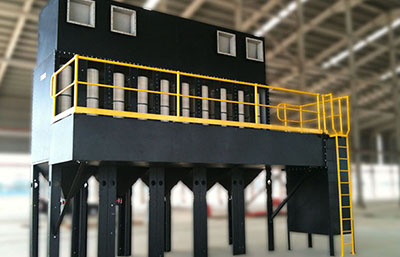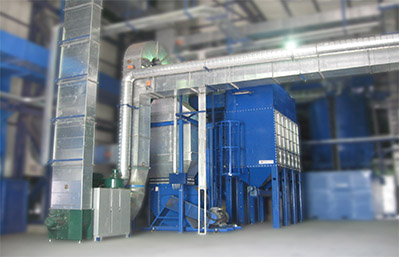 Once, when we were a blasting and painting contractor, we faced many many problems with dust from our blastroom and wheel blast machines. Our neighbours continually complained about us and reported us to the environmental authorities.
Once, when we were a blasting and painting contractor, we faced many many problems with dust from our blastroom and wheel blast machines. Our neighbours continually complained about us and reported us to the environmental authorities.
We faced numerous quality issues with dust sticking to the surfaces of freshly painted parts, resulting in lots of qc rejections.
And our work place was always shrouded in a dusty haze with a layer of fine black dust settled on every imaginable surface.
The root cause of all our problems was the antiquated inefficient dust collectors fitted to our blast machines. Although our blasting equipment was in acceptable condition the dust collectors were not performing or operating efficiently to remove enough dust. Most of the time they seemed to be half choked up with dust. Whatever dust was being removed was going straight out the exhaust chimneys (much to our good neighbours horror).
Our search for a new more efficient dust collector did not offer any promising solutions. Most suppliers were still proposing the same old design of the type we already had, a standard cartridge type dust collector. Although the pictures looked good in the brochure, we knew it was only a matter time before it would block up and create the same problems we were already facing. After determining none of the blasting equipment suppliers could offer us anything new, or an improved design, we decided to tackle the problem ourselves.
TDF Dust Collector
 As we reviewed the design of the existing cartridge type dust collector it soon became evident there was a very simple design flaw. In all instances the dirty air was entering the dust collector from below the filter cartridges. So what happens to the dust when the filter cartridges pulse clean? The answer is the dust blows off the filter cartridges for a brief moment and then most of it is immediately sucked back onto the filter cartridges by the incoming air stream coming up from below. How good is that? To us it just did not make sense.
As we reviewed the design of the existing cartridge type dust collector it soon became evident there was a very simple design flaw. In all instances the dirty air was entering the dust collector from below the filter cartridges. So what happens to the dust when the filter cartridges pulse clean? The answer is the dust blows off the filter cartridges for a brief moment and then most of it is immediately sucked back onto the filter cartridges by the incoming air stream coming up from below. How good is that? To us it just did not make sense.
So how to resolve this fundamental design flaw? The answer is a lot easier than you would imagine. Reverse the inside of the dust collector so instead of facing upwards, the filter cartridges point downwards. Then put the dirty air entry of the dust collector on the top. By doing this all the air movement through the dust collector is now in a downwards direction. And where does the dust want to go when it is pulsed from the filter cartridges? Also downwards! So now instead of momentarily leaving the filter cartridges and being sucked straight back on again, the dust comes off the filter cartridges and falls straight into the discharge hopper, exactly where we want it. The end result is the pulse cleaning cycle is so efficient the filter cartridges always remain clean. And this means they do not block up. And when they do not block up they actually suck all the dust out of our blasting machines, instead of letting half of it float through the factory. And that is exactly what we wanted.
Sometimes the simplest change turns out to be the most effective solution.
After a few more improvements, like eliminating the pulse cleaning noise by putting the complete pulsing system inside the machine, and fabricating the dust collector in a knock down bolt together design for easy shipping and assembly (no welder and just a few hand tools required for site assembly) we have produced the dust collector we were originally looking for.
So this is the story of how the Blastechnik TDF dust collector came to be created. It solved our dust problems and has since gone on to replace many other antiquated inefficient dust collectors and solve others dust emission problems.
If you have similar dust issues let us know and we will be glad to assist.
- New Mexico DMV Online Drivers License Renewal - February 22, 2023
- Can’t disable windows defender Windows 10 Support - February 9, 2023
- Hook Up on Tinder - February 6, 2023
- What floor to use - January 5, 2015
- Which abrasive should I use? - December 16, 2014
- What would you call an airless spray painting pump designed in Germany and built in the USA? - December 16, 2014
- How to dramatically increase blasting productivity - December 16, 2014
- The reason we produce TDF dust collectors - December 15, 2014
- A comparison between using glass beads and ceramic beads for abrasive blasting and shot peening - December 15, 2014
- In Abrasive Blasting, Size Does Matter - December 15, 2014
